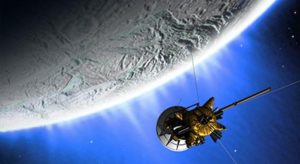 Cassini had a good run, but now NASA is preparing to say goodbye to the little space probe. It will have a grand finale, however—plunging down into the planet that is has spent so many years studying.
Cassini had a good run, but now NASA is preparing to say goodbye to the little space probe. It will have a grand finale, however—plunging down into the planet that is has spent so many years studying.
That’s right: after thirteen years investigating Saturn, it will make its final journey by descending into the gas giant’s atmosphere. Scientists hope to get as much data as they can from the endeavor, but they do not expect much; according to their current projections, they will lose the probe’s signal after six seconds, 04:55 California time on Friday, or 11:55:06 GMT.
Fun fact: because the probe is 1.4 billion km from Earth, but sending signals at the speed of light, the Canberra, Australian satellite dish that NASA will use for this event won’t actually detect the descent until 83 minutes after it happens.
Earl Maize, the project manager, compares this to an echo going through space. “Even though we’ll know that, at Saturn, Cassini has already met its fate, its mission isn’t truly over for us on Earth as long as we’re still receiving its signal.”
Before its descent into the dark side of the planet, Cassini will be taking some pictures of Enceladus and Titan, two icy moons of Saturn with liquid water beneath their surfaces. As such, they are among the most likely places in the solar system to harbor life, though probably only in simple forms. This was one of the probe’s most exciting and unexpected discoveries; before, people assumed that any water that far from the sun would have to be frozen.
Properly called Cassini–Huygens, the probe was named for Giovanni Domenico Cassini, who discovered Saturn’s ring divisions and four of its moons, and Christiaan Huygens, who discovered Titan.
The probe will not be able to send actual pictures when it descends into the planet, however; instead, its cameras will be turned off, along with its onboard solid state memory, and it will send back information about Saturn’s magnetic field and the gases that make it up.
The Cassini-Huygens mission—a joint American, Italian and European project—hopes to return to Saturn and its moons in the future. In the meantime, they will work on investigating Jupiter’s moons Europa and Ganymede, which are similar enough that they, too, may hold the possibilities of water and life.











